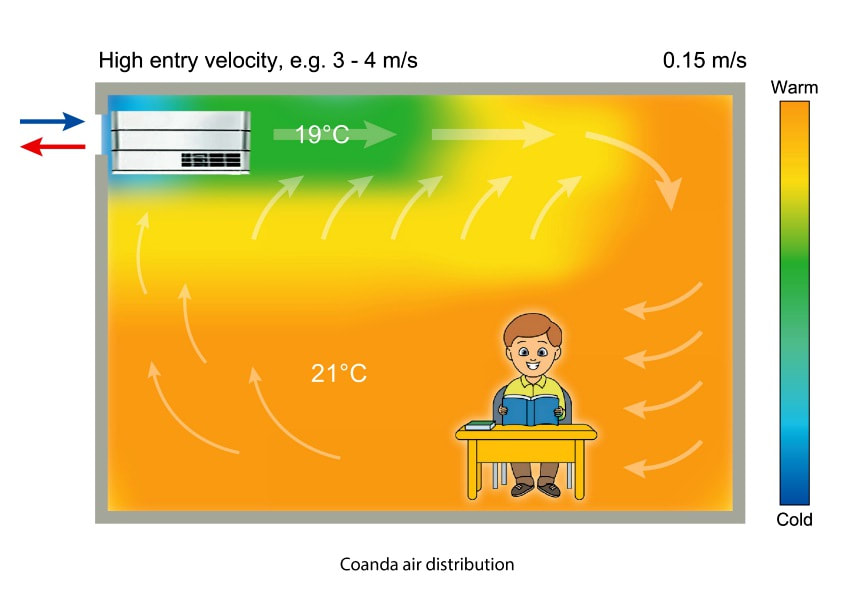10 April 2018
|
|
SAV Systems says its AirMaster Smart Ventilation Units (SVUs) incorporate key design features to tackle the common problem of draughts from ventilation systems in classrooms and workplaces.
The company says the units provide simultaneous control of air velocity and incoming air temperature, factors known to create uncomfortable draughts, whilst ensuring effective management of indoor air quality and efficient demand-controlled ventilation. |
Smart control of inlet temperature by AirMaster SVUs is achieved automatically by using fan differential speed. If the inlet temperature is below the set-point temperature for the space, the inlet fan slows while the exhaust fan speeds up. This results in a lower flow of cold air being warmed by an increased volume flow of warm air, thus producing an increase of inlet temperature.
If the inlet temperature rises above the set point, the automatic bypass damper opens sufficiently to allow a proportion of air to enter directly from the outside, without passing through the heat exchanger.
AirMaster SVUs exploit the Coanda effect to move the supply air across the ceiling for 6-8 metres, thereby entraining room air before the incoming air falls to the occupied zone at low velocity and comfortable temperature conditions.
A more detailed technical discussion of draught control is available from the SAV website
www.sav-systems.com
If the inlet temperature rises above the set point, the automatic bypass damper opens sufficiently to allow a proportion of air to enter directly from the outside, without passing through the heat exchanger.
AirMaster SVUs exploit the Coanda effect to move the supply air across the ceiling for 6-8 metres, thereby entraining room air before the incoming air falls to the occupied zone at low velocity and comfortable temperature conditions.
A more detailed technical discussion of draught control is available from the SAV website
www.sav-systems.com
Content continues after advertisements








